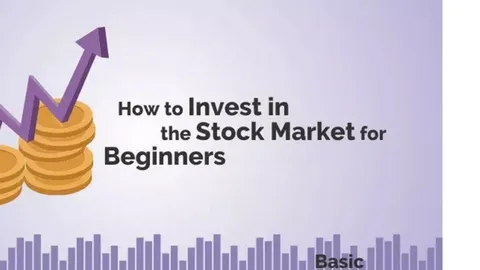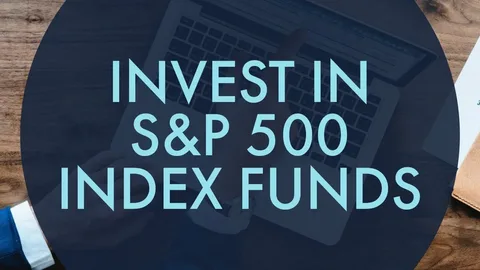
Investing sounds intimidating, right? Stocks, bonds, mutual funds—the sheer volume of jargon alone can make anyone’s head spin. But, if you’re looking for an easy, hands-off approach to start your investment journey, you’re in luck! Enter index funds—the tried-and-true vehicle for building wealth without stressing over the stock market’s daily swings.
Now, if you’re scratching your head thinking, “What’s an index fund, and how do I get started?”, you’re not alone. This guide is here to walk you through how to invest in index funds for beginners, showing you why it’s one of the easiest, most effective ways to grow your money over time.
Let’s break it down, shall we?
What Exactly Is an Index Fund?
Before we jump into the “how” part, let’s clear up the “what.” Simply put, an index fund is a type of mutual fund or exchange-traded fund (ETF) that aims to replicate the performance of a specific market index, like the S&P 500. Instead of handpicking stocks or trying to “beat the market,” index funds just track it.
Why Should Beginners Consider Index Funds?
So, what makes index funds such a go-to for beginner investors?
Simplicity: You don’t need a finance degree to invest in index funds. It’s as close as you can get to a “set-it-and-forget-it” investment strategy.
Diversification: When you buy an index fund, you’re not buying just one stock; you’re buying a little piece of every company in that index. This spreads out risk.
Lower Fees: Because index funds are passively managed (i.e., no fancy stock-picking involved), they usually come with much lower fees compared to actively managed funds.
Solid Long-Term Performance: Over the long haul, index funds tend to perform better than most actively managed funds.
How to Invest in Index Funds for Beginners: Step-by-Step Guide
Ready to dive into the details? Here’s a clear, easy-to-follow roadmap on how to invest in index funds for beginners.
1. Learn the Basics (You’re Doing It!)
You’re already on the right track! Before you invest a single dollar, make sure you understand what index funds are, how they work, and why they fit your investment goals. Start by reading up on key terms like expense ratios, market indices, and dividend yields. Trust me, a little knowledge will go a long way.
2. Set Clear Investment Goals
What are you investing for? Retirement? A down payment on a house? College tuition for your kids? Knowing your end goal will help determine your timeline and how aggressively you want to invest. Remember, index funds are typically long-term investments, so patience is key.
3. Choose the Right Index Fund
Not all index funds are created equal, so you’ll need to decide which one is best for you. Some popular options include:
S&P 500 Index Fund: Tracks the top 500 companies in the U.S.

Total Stock Market Index Fund: Covers a broader range of U.S. stocks, from small caps to large companies.
International Index Funds: Want global exposure? These funds track companies outside the U.S.
Bond Index Funds: If you’re looking for something a little less volatile, bond funds are a safer choice.
Compare these funds based on their performance, expense ratios, and whether they align with your investment goals.
4. Open a Brokerage Account
To start investing in index funds, you’ll need to open an account with a brokerage. Some of the most beginner-friendly platforms include:
Vanguard
Fidelity
Charles Schwab
Robo-advisors like Betterment or Wealthfront
These platforms make it super easy to start investing, often with no minimum deposit required. Plus, they typically offer a range of index funds to choose from.
5. Decide How Much to Invest
Here’s a fun question: How much should you invest? This will depend on your budget and risk tolerance. Keep in mind that most experts recommend not putting all your money into the market at once. Instead, you can dollar-cost average—a fancy way of saying, “invest a fixed amount regularly.”
This strategy helps you avoid the risk of investing all your money right before the market takes a dip.
6. Monitor Your Investments (But Not Too Often)
Once you’ve started investing, it can be tempting to check your account daily—especially when the market gets bumpy. But remember, index funds are long-term investments. You don’t need to monitor them obsessively. A quarterly or yearly check-in should do the trick.
7. Reinvest Dividends
Want to supercharge your returns? Make sure to reinvest your dividends. Many index funds offer this as an automatic option, allowing your investment to grow even faster thanks to the magic of compounding.
Pros and Cons of Index Fund Investing
No investment is without its ups and downs. Here’s a quick breakdown of the pros and cons of index funds.
Pros:
Low Fees: Index funds typically come with lower fees compared to actively managed funds.
Diversification: A single index fund can give you exposure to hundreds (or even thousands) of stocks or bonds.
Simple: It’s a low-maintenance, straightforward way to invest.
Strong Long-Term Performance: Historically, index funds have delivered solid returns over the long run.
Cons:
No Control Over Individual Stocks: If you want to pick and choose specific companies, index funds aren’t the best option.
Average Returns: By design, index funds only aim to match the market, not beat it. If you’re looking for outsize gains, this may not be your cup of tea.
Market Risk: Like all investments, index funds can lose value, especially during economic downturns.
FAQs About How to Invest in Index Funds for Beginners
1. How much money do I need to start investing in index funds?
Many brokers, like Fidelity and Schwab, have zero minimum investment requirements for their index funds. That means you can start investing with just $1 in some cases!
2. Is now a good time to invest in index funds?
The best time to start investing was yesterday. The second-best time is today. Because index funds are long-term investments, the sooner you start, the more time your money has to grow.
3. What’s the difference between an index fund and an ETF?
Both index funds and ETFs track market indices, but ETFs trade like stocks. That means you can buy and sell them throughout the day. Index funds, on the other hand, are priced once per day.
4. Can I lose money investing in index funds?
Yes, like any investment, index funds come with risk. The value of your investment can go up and down, but historically, they’ve performed well over the long term.
5. How do I choose the best index fund?
Look at the expense ratio, the index it tracks, and whether the fund aligns with your financial goals. A lower expense ratio means more of your money stays invested!
Conclusion
Index funds might just be the easiest, most effective way to start building wealth. Whether you’re looking to retire comfortably, save for a big purchase, or simply grow your money with minimal effort, learning how to invest in index funds for beginners is a solid step in the right direction.
The simplicity, diversification, and long-term growth potential of index funds make them a smart choice for new investors. By following the steps laid out in this guide, you’ll be well on your way to financial success without all the guesswork.
So, what are you waiting for? Open that brokerage account, pick your index fund, and start investing today!